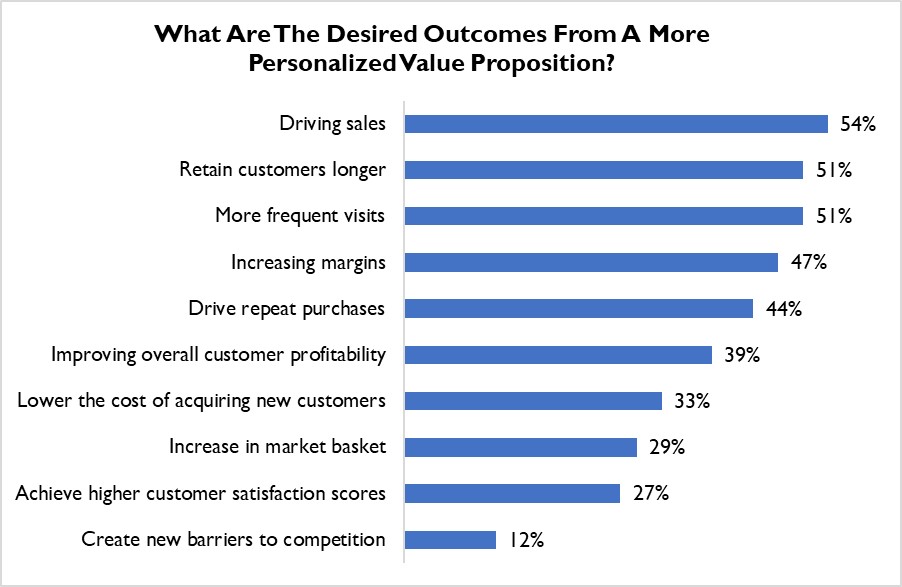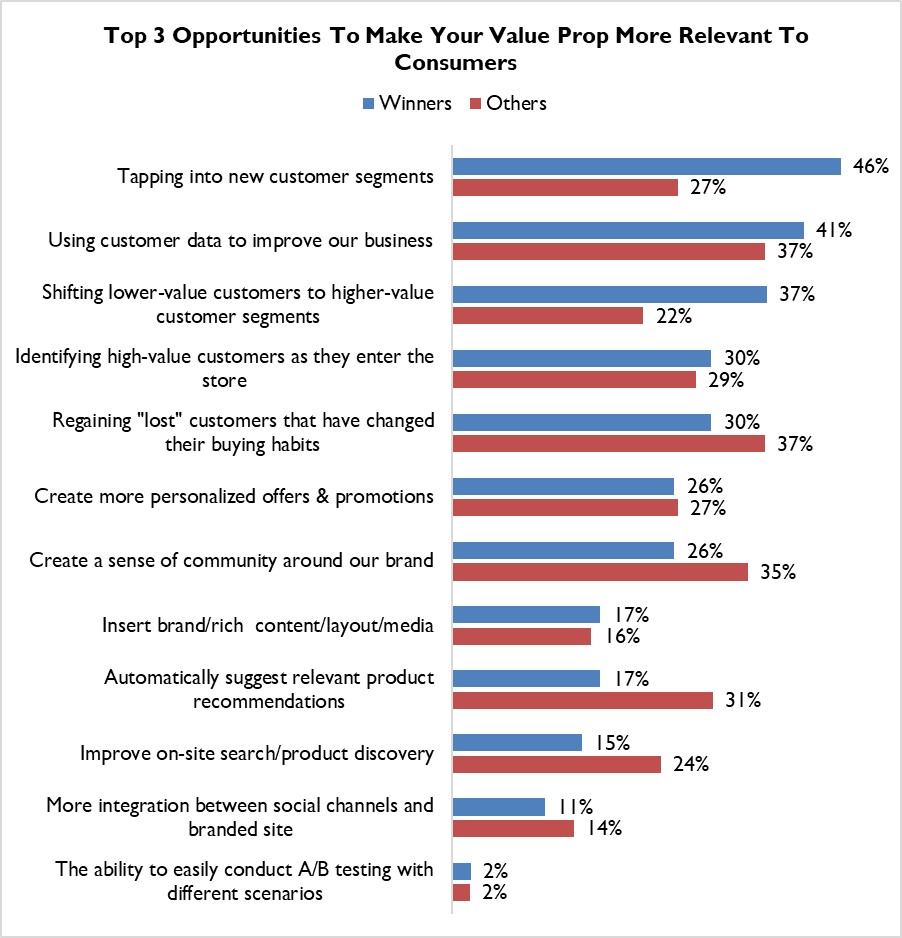Is 1:1 Retailing Really The Goal?
We set out to accomplish quite a few things in our recent research on the state of the customer experience in retail. Firstly – to get a level set on the gaps that exist between what retailers think is happening out there and what shoppers say really is. We’ve published loads on that topic, and spoiler alert: the gaps are pretty sizeable.
But while most retailers drastically overestimate how well they are meeting customer demand, the vast majority also point to a need to get closer to their shoppers. Why? As figure 1 shows, any attempts at “personalizing” the value prop – either current or future – have a singular goal in mind.
Figure 1: Relevance = Sales

Source: RSR Research, February 2023
Everything listed in the chart above is a boon for a brand – increased customer retention, upping the number of visits-per-shopper, higher market basket and lowered cost associated with “winning” a new customer – each is a goodness. But it should come as small surprise that more sales are the primary association that retailers make in their minds when they hear the words “personalization” and “relevance.”
What is far more interesting, however, is what higher performers believe will come when it is the shopper who makes the mental association (consciously or otherwise) between relevancy and their unique brand (Figure 2).
Figure 2: Winners Want ‘Net New’

Source: RSR Research, February 2023
Retail Winners know that if they can increase the number of times shoppers think of them as the favored brand to help solve whatever shopping problem they are trying to solve, then a whole world opens up – a world of net-new customer segments.
Retailers have long had a love/hate relationship with advertising. The old adage “I waste half of my money on advertising – I just don’t know which half,” can always bring a chuckle in a room full of retail execs. Winners, however, are looking beyond this long-held attitude. In their eyes, if they can leverage technology to create a value proposition that is more relevant to consumers according to a number of metrics (demographic, product affinity, etc.), then promotions can be more effective than in the past. They don’t yet believe that they are able to promote highly personalized offers to consumers, but they can promote a relevant product to a more targeted segment of both new and existing customers. This is not about 1:1 marketing, for Winners, but it is about both not wasting money and being more relevant.
Average and lagging retailers still demonstrate a measure of “magic bullet” syndrome when thinking about the possibilities new tools can bring. They are far more likely to note the loyalty-building opportunities that can result from more personalized communications, as well as the ability to lure back customers that have turned their back on the brand.
This is somewhat wishful thinking. Winners are being far more pragmatic and recognize that just having the ability to offer a relevant product in the modern era is a logical place to start. As shoppers, virtually all of us already have anecdotal stories to tell about retailers who inundate us with offers that have little (and often hilariously little) to do with our actual needs.
We invite you to read the full report here.
